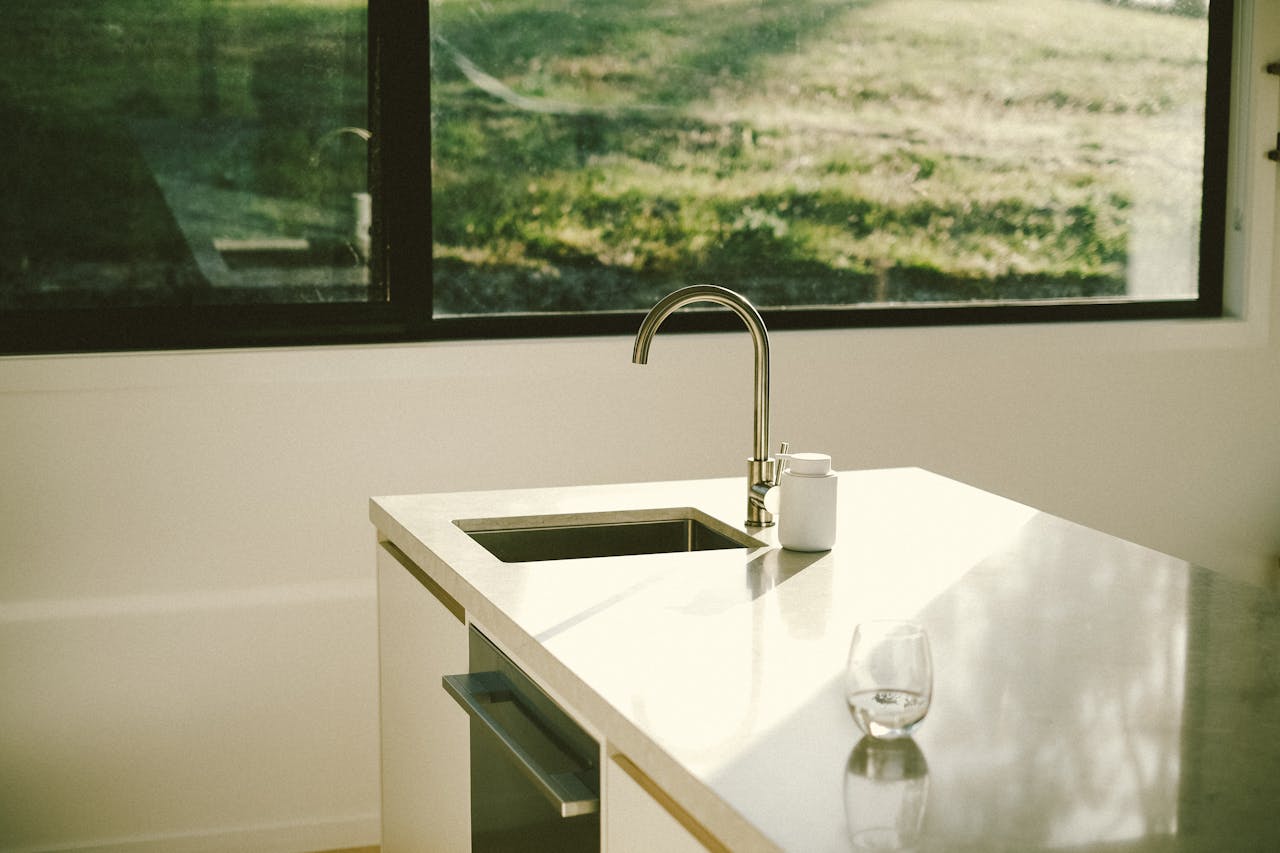The rise and significance of touchless faucets
Our modern world is awash with technological advancements, and the plumbing industry is no exception. Among the most innovative products in this field is the touchless faucet. These faucets are now widespread in commercial establishments, but they’re also gaining popularity in residential kitchens and bathrooms. With their sensor technology, touchless faucets bring not only convenience and a futuristic touch to your plumbing but also an increased level of hygiene.
Touchless faucets, as the name implies, are a type of water faucet that requires no physical contact to operate. This is achieved through the magic of sensor technology. A small infrared sensor on the faucet detects the presence of an object – in this case, your hands – in its proximity and activates the water flow accordingly. When you move your hands away, it turns off the water. This touch-free technology is a boon for hygiene, particularly in our kitchens where cleanliness is essential.
Also to discover : How can a dual sink setup in the kitchen facilitate healthier cooking practices?
Sensor technology and water conservation
When it comes to water conservation, touchless faucets shine. Traditional faucet models can, inadvertently or not, waste a significant amount of water. You might leave the water running while you scrub dishes, or forget to close the faucet tightly, resulting in a dripping sink. With touchless faucets, these issues are a thing of the past.
The sensor technology embedded in these faucets ensures that water only flows when needed. As soon as you remove your hands from the sensor’s detection range, the water stops. This functionality not only conserves water but also reduces your utility bills. It’s an eco-friendly choice that benefits both the environment and your wallet.
Also read : What are the best types of pots and pans for low-fat cooking?
Providing a germ-free kitchen environment
In your kitchen, your hands are in constant contact with various surfaces – cutting boards, utensils, food items, and more. These interactions can leave your hands loaded with bacteria and other germs, and touching your faucet can transfer these microbes onto its surface. This is where a touchless faucet comes in handy.
Since touchless faucets do not require physical contact to function, the risk of cross-contamination is significantly reduced. This leads to a cleaner, germ-free kitchen environment. This is especially important during times of widespread illness, where it’s crucial to maintain stringent hygiene practices to prevent the spread of disease. With a touchless faucet, you can rest assured that your kitchen remains a safe space.
Enhancing convenience with touchless faucets
Beyond hygiene and conservation, touchless faucets enhance convenience in your kitchen routines. Imagine your hands are covered with dough or raw meat juices – turning on a conventional faucet would leave a mess on the handles and possibly spread germs. With a sensor-activated faucet, you can start the water flow with a simple gesture, keeping your faucet clean and free from bacterial contamination.
This convenience extends to all users. For the elderly or those with mobility issues, a touchless faucet means less strain and effort to get the water running. For families with young children, touchless faucets can be a fun and effective way to encourage them to wash their hands more often, contributing to better household hygiene overall.
Choosing the right touchless faucet for your needs
With various brands and models on the market, choosing the right touchless faucet can be overwhelming. It’s important to consider a few key factors before making your purchase. The sensor’s sensitivity and reliability are crucial – you don’t want a faucet that turns on and off unpredictably. Look for products with positive reviews regarding their sensor performance.
The design and finish of the faucet are also important, as it should match your kitchen’s aesthetics. Additionally, consider the installation process – some models may require professional installation, while others can be a simple DIY project.
Remember, a touchless faucet is more than just a stylish kitchen upgrade. It’s a smart, practical investment in your health and hygiene, as well as a significant contribution to water conservation efforts. Consider installing a touchless faucet in your kitchen – it’s a small change that can make a big difference.
Touchless Faucets and Health Care: Infection Control Made Easy
Touchless faucets are an effective tool in advancing health care, particularly with respect to infection control. The kitchen, being a hub of activity and a common touch point for everyone in a household, is a prime breeding ground for bacteria and viruses. This is especially problematic when preparing raw food or coming in from the outdoors. Traditional sink faucets, with their manual operation, can rapidly become a hotspot for microbial contamination.
The ability of a touchless faucet to function without physical contact minimizes this risk. Since it operates via a motion sensor, the opportunity for bacterial and viral transfer is substantially reduced, if not entirely eliminated. This is a major advantage in maintaining a healthy, germ-free environment, and is a vital safeguard during periods of high infection risk, such as flu season or a pandemic.
These faucets are not only beneficial in residential settings but also in commercial spaces. In fact, touchless faucets are a staple in healthcare facilities and food & beverage establishments, where maintaining strict hygiene standards is paramount. The touchless feature helps to keep these environments clean and safe, reducing the fear of contamination and disease spreading.
Aside from their health benefits, touchless faucets are also versatile and user-friendly. Whether you’re a home cook dealing with sticky dough or a nurse needing to maintain sterile conditions, a touchless faucet is a reliable partner. It’s an essential tool in providing hands-free convenience and maintaining high hygiene standards.
The Future of Water Management: Conserving Resources with Touchless Faucets
Sensor faucets play a crucial role in water management and conservation. With traditional faucets, it’s easy to leave the water running while washing dishes, scrubbing vegetables, or even forgetting to turn off the tap. These habits can lead to a significant amount of water waste over time. Talk about unnecessary expense and environmental impact!
Touchless faucets, on the other hand, are designed to eliminate this wastage. Thanks to their integrated sensor technology, the water flow is activated only when it detects an object within its range – say, your hands or a pot needing filling. The moment you move away from the sensor, the water flow stops automatically. This hands-free operation not only conserves water but also contributes to reducing your utility bills.
Moreover, these faucets are eco-friendly, aligning with global efforts towards more sustainable water management practices. By using a touchless faucet, you’re not only keeping your kitchen clean and convenient, but you’re also making a significant contribution to water conservation. It’s a small change that can make a big difference!
To conclude, touchless faucets are a worthwhile investment for the modern kitchen. They offer not just convenience and aesthetic appeal, but also tangible health benefits through infection control, and substantial water savings. When choosing a touchless faucet, remember to consider the sensor’s sensitivity, the design and finish, and the complexity of the installation. With careful selection, a touchless faucet can be a valuable addition to any kitchen, enhancing cleanliness, promoting health, and championing water conservation. Whether at home, in a healthcare facility, or in a commercial kitchen, touchless faucets are a clear choice for the future. Consider making the switch today!






